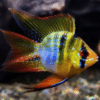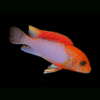To provide the best experiences, we use technologies like cookies to store and/or access device information. Consenting to these technologies will allow us to process data such as browsing behaviour or unique IDs on this site. Not consenting or withdrawing consent, may adversely affect certain features and functions.
The technical storage or access is strictly necessary for the legitimate purpose of enabling the use of a specific service explicitly requested by the subscriber or user, or for the sole purpose of carrying out the transmission of a communication over an electronic communications network.
The technical storage or access is necessary for the legitimate purpose of storing preferences that are not requested by the subscriber or user.
The technical storage or access that is used exclusively for statistical purposes.
The technical storage or access that is used exclusively for anonymous statistical purposes. Without a subpoena, voluntary compliance on the part of your Internet Service Provider, or additional records from a third party, information stored or retrieved for this purpose alone cannot usually be used to identify you.
The technical storage or access is required to create user profiles to send advertising, or to track the user on a website or across several websites for similar marketing purposes.
 Golden Eyes Vampire Crab - Geosesarma Sp. - Decapod Crustacean
2 × £8.71
Golden Eyes Vampire Crab - Geosesarma Sp. - Decapod Crustacean
2 × £8.71 

 Purple Vampire Crab - Geosesarma Dennerle - Decapod Crustacean
1 × £7.74
Purple Vampire Crab - Geosesarma Dennerle - Decapod Crustacean
1 × £7.74 














Emily Carter (verified owner) –
I recently added the Malawi Eye-Biter Cichlid (Dimidiochromis Compressiceps) to my 75-gallon tank, and I couldn’t be happier! From day one, this tropical fish showcased its stunning colors and unique personality. After about two weeks, it has settled in beautifully, interacting well with my other African cichlids. The eye-biter is quite playful and loves to explore the rocky structures I’ve set up, which is great for their well-being. Compared to other cichlids I’ve kept, this one has a more vibrant display and a fascinating behavior pattern that keeps me captivated.
I’ve noticed its appetite is robust, and it happily munches on high-quality flakes and pellets designed for cichlids. Just a note for potential buyers: ensure your tank is spacious and well-filtered, as they thrive in clean environments. I recommend this stunning fish to both seasoned enthusiasts and beginners looking to dive into the world of African cichlids. Shipping was quick, and it arrived healthy and active. I would definitely purchase from this seller again!